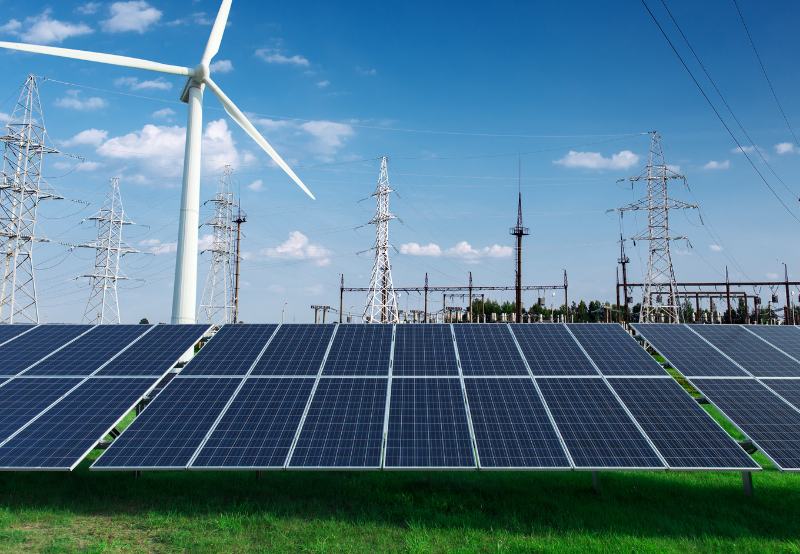
Last year, the world added about 560 gigawatts of renewable power capacity, a 64% increase from 2022, according to the International Energy Agency (IEA). This is such heart-warming news. Equally heart-warming is to hear that renewable energy is attracting more investments worldwide.
Europe is striving hard to reduce its dependence on Russian gas and push ahead with decarbonization in the wake of the Ukraine war.
However, there appears to be a new problem looming on the horizon – Inadequate power grids. What’s that supposed to be?
Well, according to Nikkei Japan, one estimate suggests that solar and wind facilities capable of generating electricity equivalent to a whopping 480 nuclear reactors remain unconnected to transmission networks in the U.S. and Europe alone.
Why so? Because the focus on increasing spends in renewable energy has lead to a rapid growth of renewable plants. But the expansion of grid infrastructure has not kept pace. In the most advanced nation, the US, the capacity of renewable facilities without grid access reached 1,500 GW on an output basis in 2023. According to the Lawrence Berkeley National Laboratory in California, this is a ninefold increase since the year 2015. Most of these are solar and wind power plants. In four major European countries, the combined capacity of solar and wind facilities awaiting grid connection has topped 860 GW, according to Bloomberg NEF.
As per data read and picked up from International Energy Agency, Nikkei Japan and Bloomber NEF, adjusted for capacity utilization, solar and wind power stations currently stuck in the interconnection queue across the U.S. and Europe could generate over 3,300 terawatt-hours of electricity per year. That’s a mammoth figure.
Global investment in clean power plants reached a figure of $670 billion in 2023. This figure was roughly double the amount invested in 2015. However, IEA data shows investment in grid infrastructure has plateaued at around $330 billion. While renewable energy plants can be built relatively quickly, building a large-scale grid can take 10 years or more from planning to completion. Complicated approval processes and rising costs for raw materials can further delay construction, making a majority of investors reluctant to invest.
Based on decarbonization pledges from various countries, the IEA estimates the share of renewables in the global energy mix will reach around 60% by 2050. However, if grid capacity shortfalls worsen, this share could decline to 40%, as countries may be forced to rely more on fossil fuels like natural gas and coal.
The existing grid technology was built for the world of fossil fuels which generate dispatchable power that can be adjusted when demand exceeds baseload levels and reduced when demand drops. The grid was not designed to integrate the intermittent power supply generated by wind and solar projects and the system fluctuations that they cause. A further challenge is imposed by transmission constraints. The existing infrastructure was designed to cater for the transmission of electricity from far fewer, larger power plants with grid forming capability and is struggling to keep pace with the proliferation of dispersed, intermittent renewables projects, many of which do not provide grid forming capability and all of which require connection.
Aging grid infrastructure is also creating substantial bottlenecks for renewable projects. While this is a global phenomenon, one can only wonder what the situation would be in lesser developed economies. Making renewables viable for producers is relatively easy. Pay them enough. But can the rest of the system handle that? Because of pricing subsidies as well as high losses which may be technical, commercial as well as theft, utilities already lose a lot in developing and under-developed nations.
So where are renewables headed? They will certainly grow, especially because of support mechanisms and sops being provided by global governments.
Recognizing these risks, some governments are taking steps to address the issue of grids. The U.S. recently announced an additional investment to upgrade its power grids. Japan plans to invest around $45 billion in transmission networks through 2050. These investments aim to attract private funding for grid infrastructure, a crucial step toward achieving these countries’ decarbonization goals.
Renewables have been called the energy source of the future. With proper effort and planning, that future can and must start much sooner. Developing and under-developed economies who wish to be part of the sustainability bandwagon in a serious way will need to find their solutions as well.
As part of my understanding of ESG/BRSR not only at corporate but also country level, I decided to do this exercise.
Source credit – Nikkei Japan, Bloomberg NEF, IEA